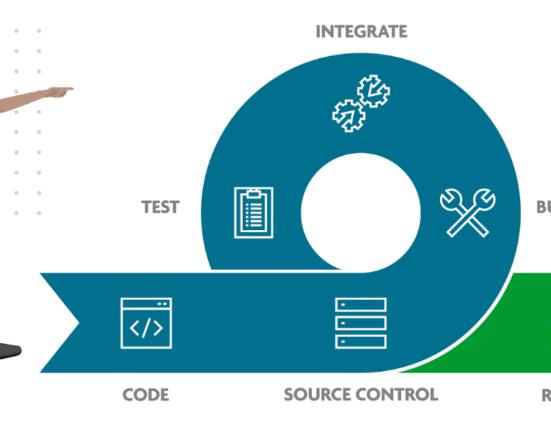Returns have become one of the quiet disruptors of modern commerce. On the surface, they look simple: a customer wants a refund, you process it. But anyone who has worked in support knows there’s more going on. Behind each request sits a tangle of policy checks, data entry, and emotionally charged conversations.
For customer support teams, returns directly impact their wellbeing. Repetitive queries and drawn-out resolutions slowly erode focus and empathy. Add in the emotional intensity of refund requests, and even the strongest teams feel the strain. The encouraging shift is that AI is no longer just a speed booster. Done right, it becomes a buffer against burnout, helping teams manage complexity with precision, empathy, and consistency.
Understanding the Return Volume Challenge
Returns are deceptively complex. What looks like a straightforward transaction can balloon into a source of friction for both staff and customers. The real challenge is the unpredictability.
Behind every return lies a ripple effect that stretches far beyond customer support. Reverse logistics must be coordinated, warehouses face the added strain of inspection and repackaging, and sustainability targets are challenged by increased shipping miles and product waste. On top of this, returns often carry an emotional charge: customers may feel disappointed, inconvenienced, or even distrustful, and support teams must absorb that energy daily. When these layers stack up, the process becomes more than an operational task, it turns into a defining moment in the customer relationship. Mishandled returns quietly erode loyalty, while thoughtful ones can rebuild trust and even encourage repeat business.
Seasonal Spikes and Sales-Driven Surges
Major sales events, holiday seasons, or product recalls can trigger sudden floods of return requests. Even the most experienced support teams struggle under this load, and small mistakes multiply quickly.
Complexity in Multi-Channel Sales
Businesses rarely sell through one channel anymore. Returns may be initiated via marketplaces, direct websites, apps, or in-store visits. Each has its own policies and workflows. Without unified handling, the result is duplication, inefficiency, and customer confusion.
Human Strain and Burnout Risk
When agents spend their day on repetitive, emotionally draining tasks, fatigue sets in. Over time, empathy drops, errors creep in, and turnover rises. This is less a staffing issue and more a structural one. Teams are asked to do too much without the right support.
Burnout reshapes the culture of support teams. Once empathy is eroded, even small customer frustrations escalate faster, creating a cycle of stress that impacts both service quality and employee morale. Breaking this cycle requires tools that handle volume and actively protect the human capacity for empathy.
Core AI Capabilities That Ease Return Management
Handling returns efficiently requires more than just automation: it demands intelligent systems that can adapt to complexity, reduce manual effort, and maintain a high-quality customer experience. This shift is at the heart of the future of customer service with CoSupport AI, where automation is designed not only to process tasks faster but to manage them with empathy and consistency.
- Automated Return Authorization and Policy Matching. AI checks eligibility instantly against purchase data and policy rules, eliminating slow manual verification.
- Intelligent Workflow Routing. Instead of static ticket assignment, requests are routed dynamically to logistics, finance, or support depending on context.
- Proactive Customer Communication. Status updates, refund timelines, and clear next steps are delivered automatically, reducing the volume of “Where is my refund?” queries.
- Visual Assessment Tools. Customers can upload images of items, and AI analyzes condition or compliance with policy, reducing warehouse inspection workload.
The result is a smoother flow: fewer repetitive decisions for agents, fewer bottlenecks for operations, and more transparency for customers.
Another overlooked benefit of AI is its impact on error reduction. Manual returns involve repetitive copy-paste actions, policy lookups, and form filling, each one an opportunity for mistakes that frustrate customers and drain resources. AI minimizes these weak spots by auto-filling data, enforcing consistent rules, and flagging exceptions for human review. The effect is twofold: fewer escalations from preventable errors and more predictable turnaround times. That consistency rebuilds customer confidence. In industries where return abuse and fraud are rising, AI also provides an extra layer of defense by spotting unusual patterns that humans might miss.
Integrating AI Returns Management Into Existing Workflows
AI returns management is most effective when it is embedded in the systems that already run the business. The real gains come from integration, where context and policy are applied automatically.
The real challenge for many companies is actually weaving AI into the daily rhythm of existing teams. An assistant that operates in isolation quickly becomes another tool to manage. When it is integrated directly into CRM and OMS workflows, however, it fades into the background and simply feels like part of the process.
CRM and OMS Sync
AI systems need full visibility into customer and order history. When integrated with platforms like CRM and Order Management Systems, returns can be processed with all relevant data (previous purchases, communication logs, and loyalty status) immediately on hand.
Policy-Driven Logic
Every brand has its own nuances: restocking fees, product-specific restrictions, or eligibility windows. Embedding these policies into the AI’s decision engine ensures consistent, compliant handling across all channels.
Multi-Channel Consistency
Whether a customer initiates a return in-store, through a chatbot, or over email, the process should feel seamless. AI ensures the same logic applies everywhere, reducing confusion and creating continuity across touchpoints.
Final Takeaway
Returns are more than logistical work; they are emotional flashpoints. Customers may be frustrated, disappointed, or uncertain. Support agents bear the brunt of this tension while managing high volumes of repetitive tasks. Left unaddressed, this combination leads to burnout and rising attrition.
AI changes the equation. By automating repetitive steps, predicting resolution paths, and providing consistent communication, it transforms returns into a manageable function rather than a pressure point. More importantly, it allows support teams to focus their energy where it matters most: handling complex, high-value conversations that require human judgment.
For more visit Pure Magazine








